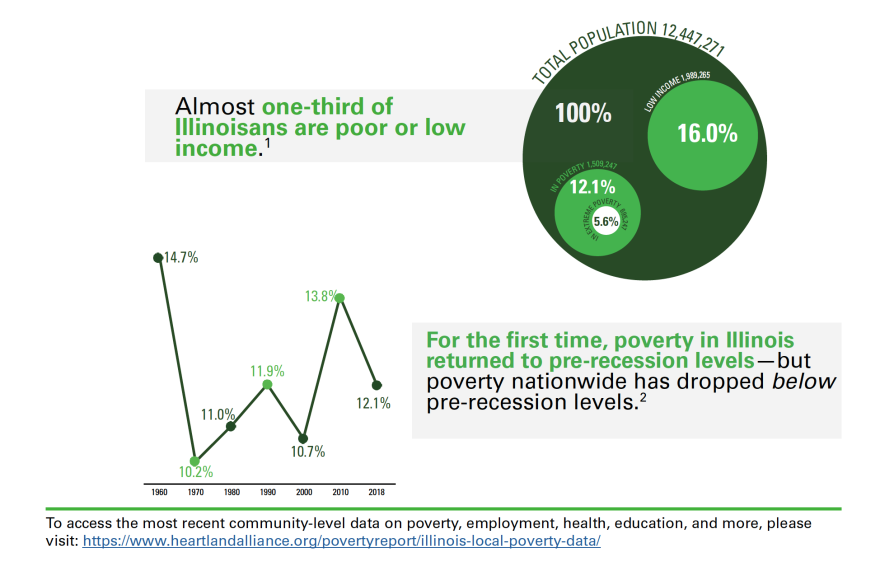Though the U.S. poverty rate has dropped to the pre-recession level, Illinois has not yet reached that target.
Newly released figures from the U.S. Census put the national poverty rate in 2018 at 11.8 percent, which shows a gradual decline from the year prior. Illinois’ rate of 12.1 percent about equals the pre-recession number. That’s according to the Heartland Alliance Social Impact Research Center, which crunches the numbers.
Katie Buitrago is director of research at the center. She says it is likely Illinois’ budget crisis played a role in numbers stagnating.
“So that was many years Illinois was not investing in moving people out of poverty as it should and you can see that in the sort of slower recovery from the recession, and that’s concerning…when economists are predicting another recession,’’ Buitrago said.
One-and-a-half million people are living in poverty in Illinois – more than 12 percent of the population.
Meanwhile, Illinois’ overall uninsured rate didn’t budge from 2017 to 2018, but newly released numbers show it climbed among some portions of the population.
Buitrago says Medicaid coverage ended for over 100,000 non-seniors. A smaller drop in the insured rate occurred for those with private coverage.
“There’s just been a lot of attacks from the administration on the Affordable Care Act .And you can see the effect of those attacks on the uninsured rate,’’ she said. “They repealed the individual mandate, they’re gutting enrollment assistance programs and there’s been an expansion of low-quality, short-term health plans.”
Buitrago says anti-immigrant policies have also contributed to the loss of insurance coverage.






